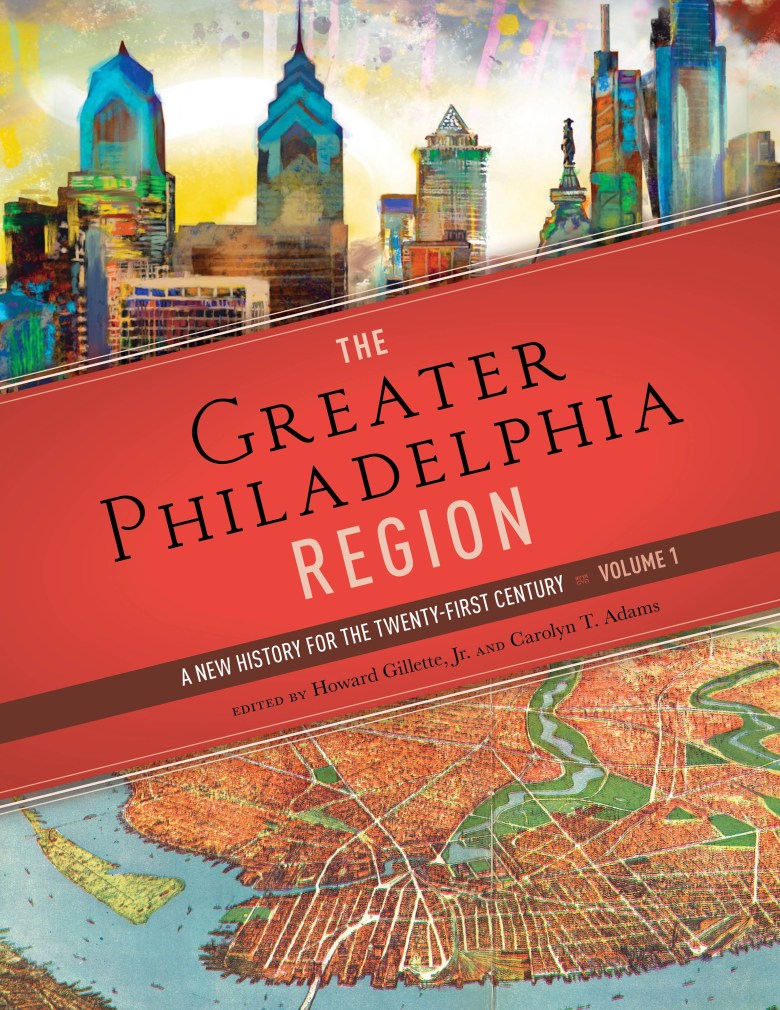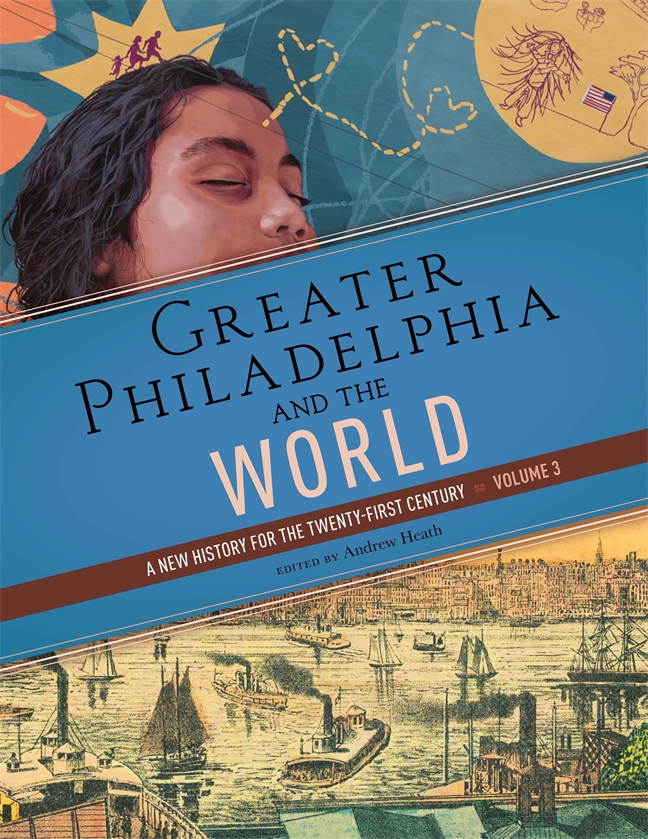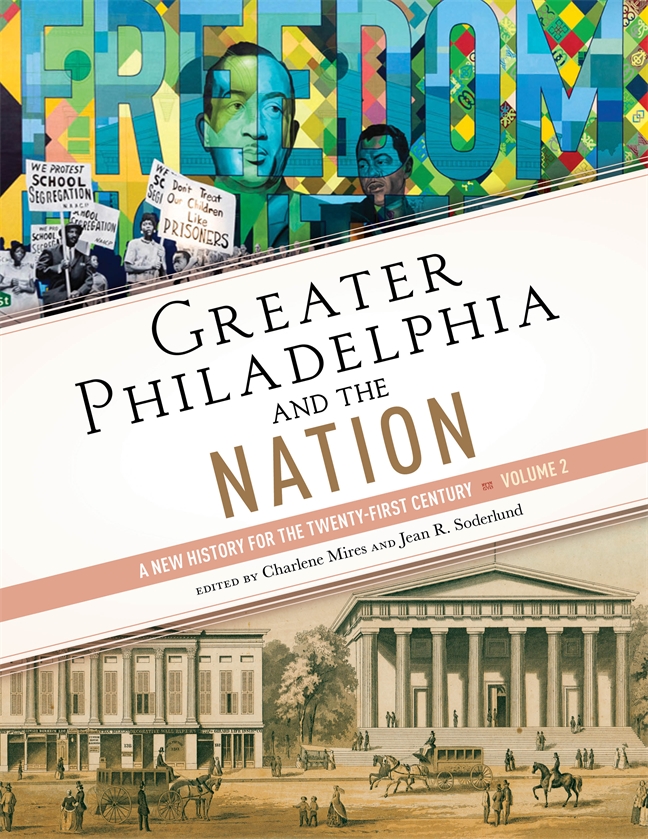University of Pennsylvania Press is publishing three historical books ahead of the nation’s 250th celebration next year. The trio — Greater Philadelphia Region, Greater Philadelphia and the Nation and Greater Philadelphia and the World — will offer various resources, including essays, untold stories, and analyses of regional issues.
The books were made in partnership with The Encyclopedia of Greater Philadelphia, a project out of Rutgers University-Camden aiming to increase knowledge about the history of Philadelphia. Charlene Mires, the co-editor of Greater Philadelphia and the Nation, explained that these books were created following community input.
“This is a project that grows from community engagement,” she said. “The Encyclopedia of Greater Philadelphia’s origins started with community programming, and we listened to what people were interested in and what they wanted to learn more about. And since 2009, when we began those engagement programs, we have been building, topic by topic, and hundreds of people have contributed their time and talents to creating the content that you’ll find in these books.”
Mires said the book is unique, as it compiles and streamlines information that may not be as easily accessible to audiences.
“Often when certain historical items are first published, it’s in an academic journal, where people might not have wide access to it,” she said. “So, part of what we accomplish in a book like this is to convey the best of what we know, from those sources, to a more widespread audience. I think that most people who look at these books are going to learn a lot of things they didn’t already know.”
The books will be released to the public on Oct. 21.
The three books
Mires explained the three-volume set of books will be called Greater Philadelphia: A New History for the 21st Century. Each book has a distinct focus.
The first, she said, will focus on Philadelphia as it relates to the surrounding counties and regions.
“The Greater Philadelphia Region is the book that has the geographical development of the region,” she said. “It has all of the sections of the city, and it has all the counties. I think the ways that we’re connected, whether it’s through transportation or through governance, it’s really amazing that so many hundreds of municipalities share this region.”
 The first book in the series, The Greater Philadelphia Region, will focus on Philly in relation to other towns in Southeastern Pennsylvania, New Jersey and Delaware (Photo courtesy of The University of Pennsylvania Press)
The first book in the series, The Greater Philadelphia Region, will focus on Philly in relation to other towns in Southeastern Pennsylvania, New Jersey and Delaware (Photo courtesy of The University of Pennsylvania Press)
She said this history can be important to analyzing and addressing regional issues – such as funding SEPTA, or how to respond to a government shutdown.
The second book will focus on Philadelphia’s relation to the nation.
“[This book is] perfect for the 250th anniversary,” she said. “This book talks about the foundational history of the American Revolution and Philadelphia’s role in it. But then it proceeds beyond that time period to trace out how the nation has grown and changed and how the Philadelphia region has made an imprint on that.”
She said the book will also explore how the nation has grown and changed, with sections on the struggle for civil rights, and Philly’s relation to popular culture, including music, movies and sports.
The final book will focus on Philadelphia’s relation to the world.
“Philadelphia and the surrounding region is an incredibly diverse place, and so this book explains how and why we got that way,” she said. “So, you learn about immigration in that book, and how people over time have come from all parts of the world. You also learn about world religions in our region and about industries, as Philadelphia has long been known as the workshop of the world. You also learn about global conflicts and the ways that Philadelphia has participated in those.”
 The final book will focus on Philadelphia’s relation to the world (Photo courtesy of The University of Pennsylvania Press)
The final book will focus on Philadelphia’s relation to the world (Photo courtesy of The University of Pennsylvania Press)
Mires said the book’s topics were frequently sourced from The Encyclopedia of Greater Philadelphia.
The impact
These books will explore a cohesive set of topics, and relate them to Philly.
“We have also learned that there are a lot of topics that have been studied, but not for Philadelphia in particular, or not for the region in particular,” she said. “So, we might set out to write about something, like World War II, for example, and say, ‘What really did happen in Philadelphia during World War II? Or in South Jersey, or in Wilmington, Delaware?’ How can we get a broader view of those topics?”
Additionally, she explained that there hasn’t yet been a cohesive set of historical resources for certain topics – such as African American or women’s history. Having this history in this kind of book will also provide it to a more widespread audience.
“I think we continue to add to the layers of these histories in terms of locations, but also in terms of the many groups and individuals who are parts of these histories,” she said. “So, in the last generation of scholarship, a lot of new material has been written about African American history, about women’s history, about LGBT history, and about a number of different nationality groups.”
Mires hopes readers can “see themselves differently” after exploring these books and find parallels between their own life and Philly’s history.
“So I think these books speak for our generation of knowledge about Philadelphia and the region,” she said. “And it’s a way to put a pin in that and say, ‘This is what we know about our region at this important moment in our history.’
“But we all hope that that’s then a springboard for the next generation of building new knowledge about our region. We hope that people will take these and learn from them and pursue their own questions. And in the case of the scholars in the region, start writing the next generation of books.”
Beyond use for everyday readers, Mires said the books will also be used in Philly institutions such as libraries and schools.
“Our publisher, University of Pennsylvania Press, has received some funding from The Philadelphia Funder Collaborative for the Semiquincentennial, and that is allowing the books to be distributed into branch libraries and into schools,” she said. “And, we’re also doing workshops for Philadelphia school teachers, using these books, so we hope they have a lot of educational value.”
The books can also help those in the media with important, quick context for stories, she said.
Beyond the hundreds of experts and historians who have put time into creating these books, Mires said there has also been help from graduate students, editors and other community members.
“We’ve also been proud to involve many of the graduate students in our regional universities, often helping them to get their first professional publications, by publishing with us through a very extensive process of peer review and fact-checking, where we all learn so much from each other,” she said. “And … those people writing, we have had many editors leading the project and cultivating sets of essays. Over time, I would say, there have been probably 20 or 25 people who’ve taken leading responsibility for editing.
“And then, to make these books, there are five of us who have taken the leading roles in creating the books, but we all benefit from the work of everyone else, all throughout the project, and I hope we’ve represented them well.”

